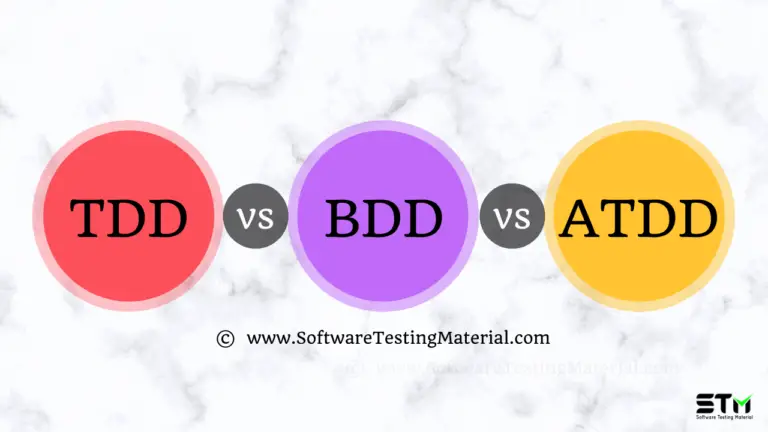Agile Testing Metrics: How Can Metrics Help?
The Agile methodology is aimed at ensuring the development of high-quality software.
All Agile testing tools are focused on providing the most highly functional software. Moreover, it is directed at releasing the top-notch software regularly.
It brings bigger significance to the advanced testing methods used. They ensure the high quality of offered software.
What is more, all the testing equipment brings enough possibilities to test the software thoroughly and improve it once picking up any problems.
This methodology allows delivering the most efficient software.
When you tend to arrange a highly effective Agile testing team, you need to make sure you know your ultimate goals.
Once you have every detail of your project carefully checked, organized, and listed as it is stated at jatapp, you can focus on the testing details.
In fact, during the last few years, there were drastic changes in the ways the software was tested.
The most efficient testing methods are defined by the benefits they bring to developers. The Agile methodology has a wide selection of testing methods.
Thus, you need to learn the most effective testing methods and techniques to use.
Also, you should be careful with the testing metrics in Agile you plan to use.

You can find lots of important information on the most efficient testing methods and metrics in this article.
Agile Testing and the Development Process
Agile testing reveals the number of test methods to use to test your software. These methods are used once you follow the Agile software development process.
This methodology brings a set of principles that include responsiveness to feedback, flexibility, and cooperation.
Agile is a relatively new methodology in software development.
The old-fashioned methods are lacking numerous options available for developers with Agile tests these days.
In particular, the old waterfall model for software development separated developers from testers.
Thus, when developers were focusing on the most operative code to write, the quality testing team was trying to break the code to find any mistakes or bugs.
The final result was low cooperation between developers and testers.
It ended mostly in hindered software production. What is more, the entire process was lacking proper collaboration and organization.
The Agile approach allows testers and developers to cooperate.
This is a cross-functional approach, thus the quality testing team and software developers are no longer separated.
They can work as a united front.
The developers in the Agile approach think about testing once completing the code.
It allows finding the bugs faster.
The testers also pay more attention to the development process.
Thus, they are more involved in software development and help to build a product.
Agile Testing – How to Carry on Properly
Every software development approach has its peculiarities and principles.
The Agile methodology brings feedback, flexibility, and collaboration as key principles.
To ensure efficient testing, it is good to define the most effective methods and QA metrics in Agile.
Once you have your ultimate goals of software development defined, you need to align them with the proper Agile practices.
Therefore, it is good to check all the available information on Agile QA metrics before starting your development process.
It is always beneficial when you know what exact practices to use to ensure the most careful testing.
The Agile technology calls for the following practices to be included in your top testing practices list.
#1. Wide Use of Automated Tests
The automation of certain processes is quite a beneficial approach. It brings more time for testers and developers to focus on other important issues.
Besides, it is highly preferable to test frequently and test in the early stages of a development process.
In addition, fast automated tests allow getting fast feedback to check on the process.
Automated tests must be used where it is possible. Still, manual testing must be a foundation of a chosen approach.
The automation of tests is the responsibility of both developers and testers since the Agile approach is focused on collaboration.
Once using automated tests, it is preferable to focus on tests that check the system’s stability.
Thus, the regression tests must be the first in line to be ensured. Sure, automated tests have their limitations. Where the manual tests must be provided, they need to be used there.
#2. Business Analytics and Consulting
To ensure good testing methods, it is important to have proper testable requirements established.
To remove any ambiguity from users’ feedback, business analysts should be hired. It helps check every user’s story and make it acceptable due to set criteria.
#3. Properly Chosen Test Metrics
Test metrics are an important issue when you establish an Agile team. It provides needed feedback on testing, shows the particular areas that must be improved, and defines whether the final aims of the Agile process were achieved.
In Agile methodology, a final aim is always high-quality software that gets constantly released.
#4. Functional Complexity Avoidance
Since Agile methodology is based on cooperation between developers and testers, it is good when you can avoid functionality complexity.
Once you provide complex functions or features, it is getting more difficult to unit test Agile them properly.
Therefore, the developers should avoid complex functions and features.
In such a case, testers will have better chances to ensure the complete software testing process successfully.
This is a team’s responsibility to provide proper functionality. Besides, the team should work to figure out whether the assigned test covers the entire set of functions.
Good Agile testing is ensured when developers and testers work as a single unit.
Agile Test Metrics Specifics
When the Agile team has a product to test, the test metrics must be used properly. They allow checking the possible defects in production, defect cycle time, code complexity, and cumulative flow.
#1. Defects in production
The test methods should be used at all stages of software development. Besides, if they are found in the early stages, it becomes much easier to fix them.
Thus, using this metric is important to figure out possible defects at different stages of development.
#2. Defect cycle time
The Agile team requires a certain time to deal with possible defects. The Defect cycle time defines the exact amount of time required for figuring out and fixing escaped defects.
With the shorter cycle time, the developers and testers can achieve their main goal of releasing the product much faster.
#3. Code complexity
The complex code is rather a disadvantage most times. The code must meet the industry standards and be clear enough to ease the testing routine. With way too complex functions and features, it is difficult to arrange proper tests to check the code.
Thus, the code must be readable to fix the defects fast and ensure the high quality of software.
#4. Cumulative flow
The created cumulative flow diagram is widely used to check the entire development process. It allows checking the work ongoing, finalized tasks, speed, and certain areas to pay attention to.
This metric allows checking the testing progression.
It also helps to figure out whether testing remains a holdup in the software development cycle.
How Agile Metrics Can Help
Agile metrics allow for carrying out timely testing and figuring out any defects in the early stages. It makes the testing process more goal-driven.
Besides, if you use only useful QA metrics, you can succeed in your testing process quickly.
Thus, it is preferable to select only metrics valuable in the Agile context. Thus, you need to pick up testing that is advanced and Agile-related.
No old metrics can be used for software progress testing.
Besides, it is important to remember that there is no such thing as perfect metrics.
There are no metrics that can offer answers to all the questions you have about the product quality or testing efforts. There is not a single magic approach. You need to deal with an all-inclusive approach that unites the determinations of all the participants of the Agile team.
Thus the chosen quality assurance Agile metrics represent the combined perception of the quality of the software.
It is important to check the full information on Agile testing to know all the possible pitfalls and learn the key principles, and methods.
The software testing metrics are extremely important for Agile team members, developers, managers, and other specialists.
These particular metrics allow for assessing, testing, and tracking the work of developers and testers.
To improve the Agile testing process, the most useful and advanced test metrics must be chosen.
Key Test Metrics to Choose From
With an impressive list of available test metrics, every Agile QA tester selects different metrics.
Choosing the proper metrics is a step forward to a high-quality software release. Once evaluating the test metrics, the testers get the results.
Further, the results are quantified to define the Agile QA testing success and software development progress.
Agile test metrics are special measures used to define the progress of the software testing process.
In most cases, metrics help the team to track and monitor the progress of software testing, eminence, and efficiency.
They are used to improve the productivity of the testing process. They also bring enough useful information for stakeholders to make their decisions.
There is a huge list of test metrics. Still, all of them are divided into four main groups.

#1. Source Code Metrics
These metrics are used to test the original code. Since the code is an extremely essential issue in the development process, it must be tested properly.
To ensure the proper testing routine, the metrics are used.
In fact, the code’ quality is tested with the test metrics. These metrics are also divided into subcategories based on their amount, difficulty, size, interconnection, combination, and inheritance factors.
#2. Development Metrics
These test metrics check and define the software development. They help to check the time required for checking and fixing code defects. They allow checking how the defects are fixed during the development process.
Thus, the Agile development metrics evaluate the exact time needed for fixing the mentioned defects.
The metrics are used more on focusing on the defects that appear in code than on the time needed for their fixing.
#3. Testing Metrics
These metrics check and define the efficiency of a product’s testing. They also assess the eminence and functionality of the tested software.
The test metrics are divided into two subcategories based on what exactly they evaluate.
The first one is test coverage. The second one is the efficiency of defect removal.
The test coverage metrics define the precise number of finished tests, also the number of tests underway. Also, it defines certain parts of the product that were carefully tested. It can also provide the measurement of testing, etc.
The efficiency of the defect removal criterion reveals the exact number of recognized defects and the number of defects that were removed.
These metrics greatly help improve the quality of the final software product.
#4. Project Level Metrics
These metrics define the project quality. They quantify defects, agenda, budget, productivity, and evaluate resources and deliverables. These Agile quality metrics allow estimating the health of the project.
Thus, they provide enough information to make proper decisions.
The Agile project metrics show whether the project is completed once showing previously estimated KPIs.
Thus, they allow assessing the current project status, predict the possible risks, and evaluate the team’s work value and efficiency.
Categories of software testing metrics
#1. Process metrics:
To measure and improve the ability of the software testing process.
Say, how many defects were identified, how many defects were fixed, how much amount of time was taken to fix the defects etc.,
#2. Product metrics:
To improve the software product quality.
Say, it describes the characterisics of the software product such as design, features, performance etc.,
#3. Project metrics:
It describes the characterisics of the project such as schedule, cost, productivity, and also measures the efficiency of the project such as how well the project is moving forward, whether the project is going in right direction as per schedule, and is the project lagging behind the plan etc.,
#4. People metrics:
To measure the skills and ability of the software testing teams.
Say, whether the teams working as per schedule, Whether the team identifying the quality defects with in the stipulated time, etc.,
The Importance of Testing Metrics for Business
The testing metrics are important for businesses since they provide a huge amount of useful information for making decisions.
The up-to-date goal-oriented testing metrics are used for the following purposes:
- Tracing the development and quality of software testing projects;
- Defining the efficiency of the software development process;
- Pinpointing the particular areas that require certain improvements;
- Handling priorities and workload between Agile team members;
- Helping investors to make the right and timely decisions;
- Tracking and monitoring the productivity of testing processes;
- Estimating expenses and planning the timetable for future tests.
- Defining what exact process or technology needs improvement.
Thus, the test metrics allow estimating the efficiency of testing processes.
Besides, they allow the business owners to make the right decisions once getting useful data and information. It also helps in figuring out the exact processes and technologies that require an upgrade.
The Particular Help of Test Metrics
The up-to-date and goal-oriented test metrics help to:
- Improve the entire project planning process;
- Approve that the test quality is top-notch;
- Analyze and describe the possible dangers;
- Estimate the total budget and required time;
- Identify the exact areas that require upgrade;
- Manage the workloads within an Agile team;
- Decrease the general time required for tests;
- Advance the quality of software products;
- Add value to the customer satisfaction;
- Escalate the return on investment (ROI);
- Decrease the testing process’ general costs;
- Estimate the production delivery.
To get the best testing results, the test metrics must be quite simple, understandable, and assessable.
They must also be self-determining in the coding language. It is good when certain test metrics are computerized. The test metrics also should be cost-effective and adaptable to every software.
Conclusions
The up-to-date testing metrics are used widely for monitoring the Agile testing efforts, productivity, and coverage. They also help to track and fix defects and evaluate the costs of tests.
Certain best practices must be followed to choose the most useful test metrics. The most efficient testing metrics help track practically anything.
Thus, they must be properly directed and linked to the business goals.
To gain the wanted success and get high-quality software released, it is important to select only the most relevant metrics.
If once managing a personal business, you need suitable testing metrics, it is always better to select the most relevant ones.
You may need to check and analyze the current trends. Once the testing metrics goals are met, the Agile team members can declare their success.
The testing process is called to check the quality of the product, find any defects and fix them fast before the release.
Once all the defects are fixed and the top-notch quality is verified, the software release is about to be a successful one.
When developers and testers select the most suitable metrics, they define the timeframes for the testing to be done.
Once the schedule is followed, they can provide the final results to investors.
Next, the investors can proceed with making the right decisions on the used technologies and processes.
If there are some processes or technology that require an improvement, it must be ensured shortly.
In such a case, the business remains competitive, with all the proper improvements made. Thus, all the software releases are considered to be successful.
Also Read: Software Test Metrics – Product Metrics & Process Metrics






